Prior to actually falling pregnant I never really understood pregnancy back pain. About three months into my pregnancy I started feeling an unfamiliar pain whenever I turned over in bed, or slid off the bolsters after cross-bolster setubandha sarvangasana. Basically, whenever my weight was unevenly supported by my pelvis. This kind of pain is common and is referred to as Pelvic Girdle Pain (PGP) and also Pubic Symphysis Dysfunction (PSD).
About 2 in 5 women experience this pain, so it’s more common than we think.
This pain occurs in different areas of the pelvis, such as the groin, the buttocks (similar to sciatica), the thighs, the lower back, or the hips. I sometimes even feel a clicking in my pelvic joints (even now, 6 months into the pregnancy). But thankfully, I’ve been able to successfully manage the pain through regular yoga and conscious movement.
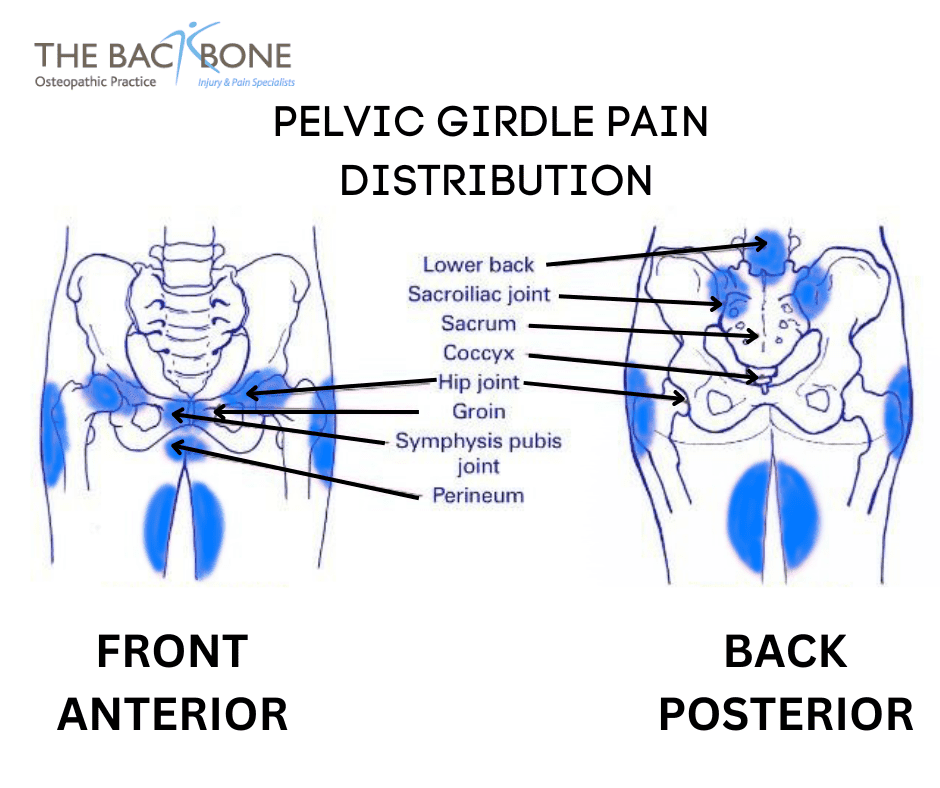
Source: https://thebackbone.co.uk/pelvic-girdle-pain-pgp/
Causes
There are many causes for Pelvic Girdle Pain. It can be related to previous injuries or even the natural structural build of a woman. The weight of the growing baby also puts added strain on a woman’s pelvis, which can be a contributing factor. Other factors are:
- The most common reason is the hormone relaxin which is released during pregnancy by the ovaries and the placenta. This hormone loosens the muscles and ligaments and enable your pelvis to enlarge to let the baby to descend down and out of the vagina. In short, relaxin makes labor and delivery easier. The downside is that relaxin also affects other joints in the body, which are responsible for postural changes during pregnancy. These can also lead to back pain, but can be managed with yoga therapy or the help of a good physiotherapist.
- An unstable pelvis. This causes body weight to load one side of the body which puts repeated uneven stress on one side of the body. This is why this pain can sometimes be felt after an active day. If you’ve been able to identify what aggravates this pain, you should avoid it. Ignoring the pain won’t help – the pain only gets worse.
- In some cases the position of the baby in-utero can also cause PGP.
- Weak core muscles.
- Tight muscles.
- Inflammation of the muscles and ligaments.
Yoga for PGP
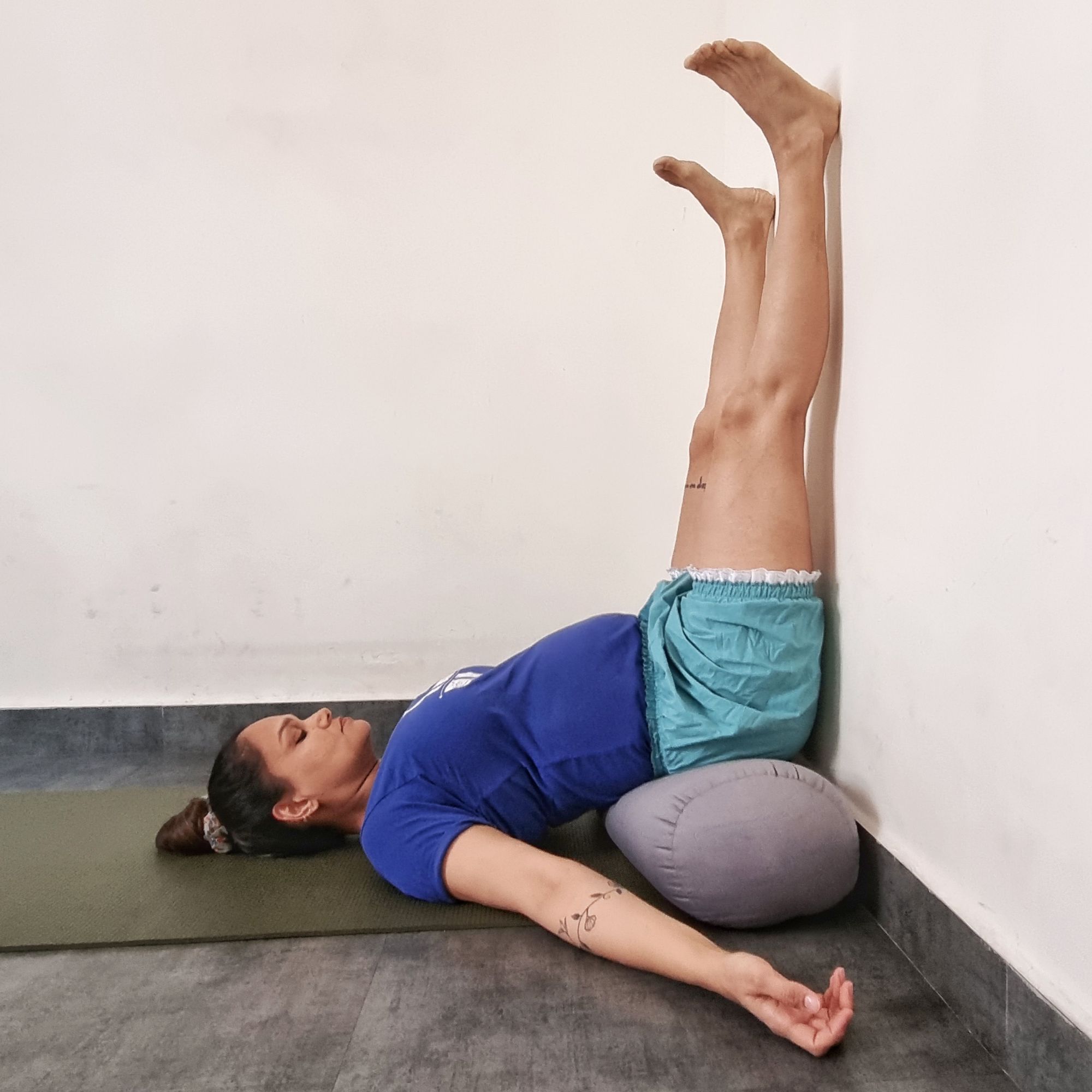
Viparita Karani helps to relax and align the lower back. Make sure to use a bolster for extra comfort and width for the pelvis.
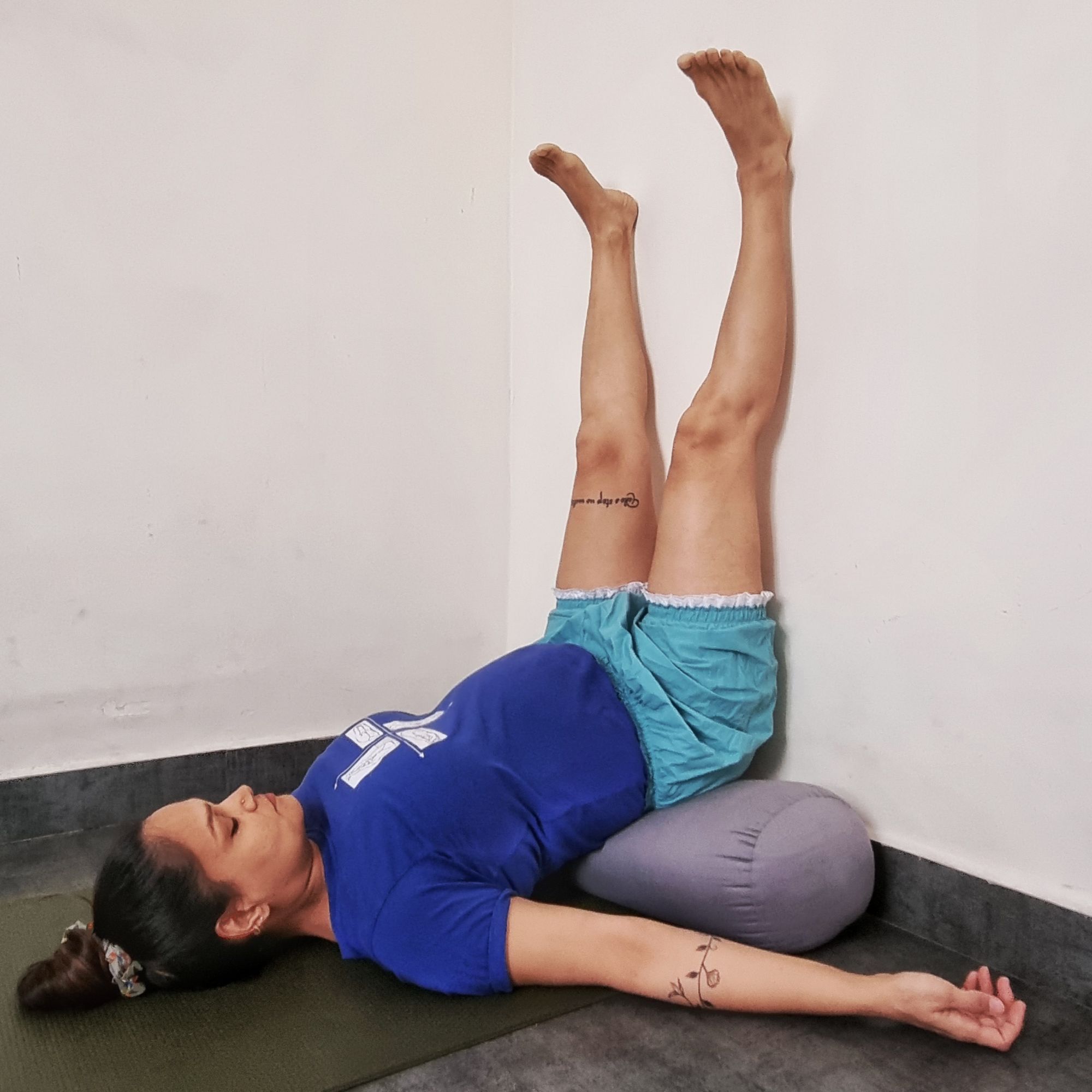
Make sure to keep your legs wide to accommodate the growing belly.
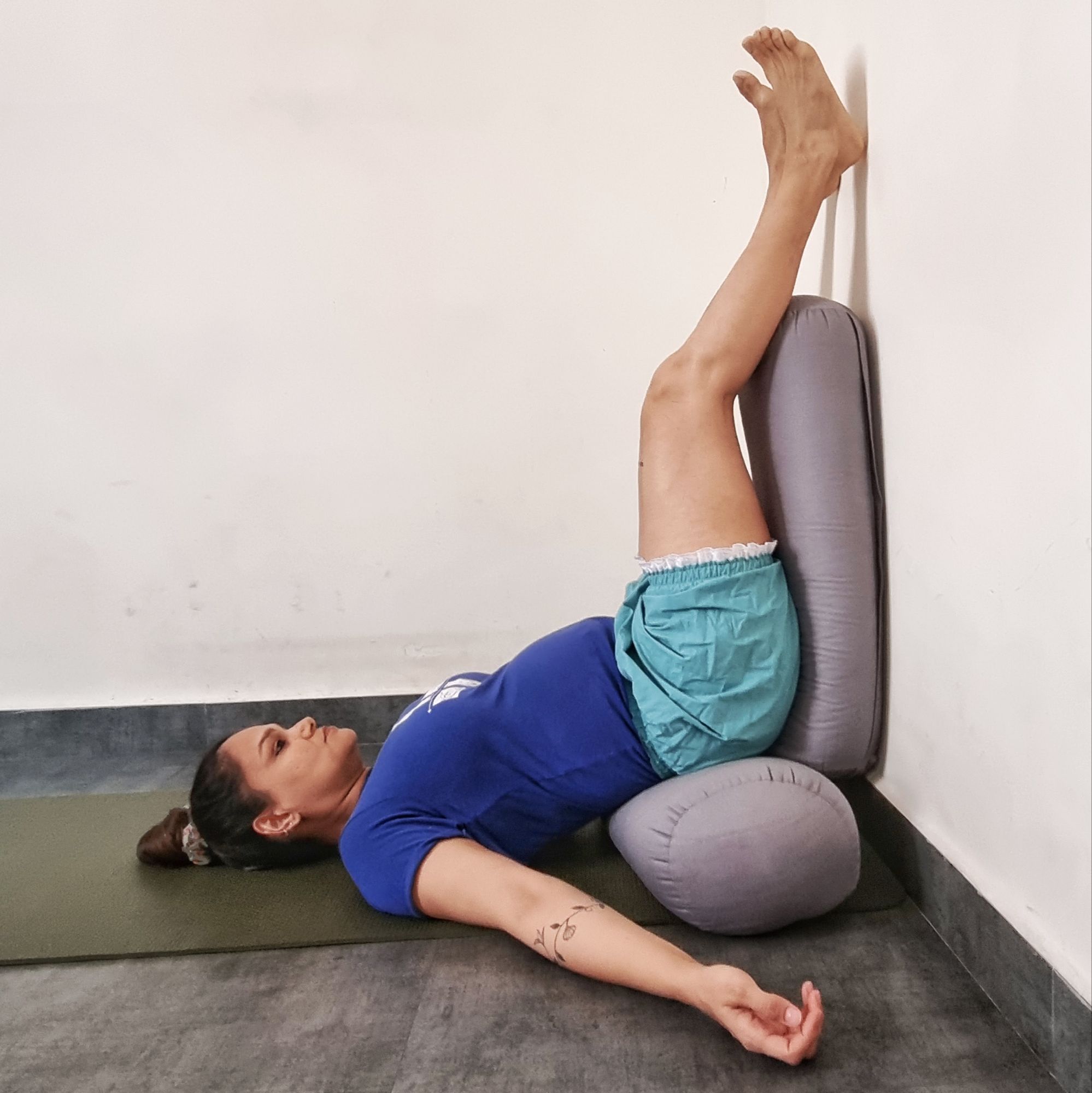
In the prenatal yoga classes I attended, my teacher taught me this variation – where you can give more support to your lower back using another bolster. It seems like a small and insignificant change – but on many days this variation felt extra soothing.
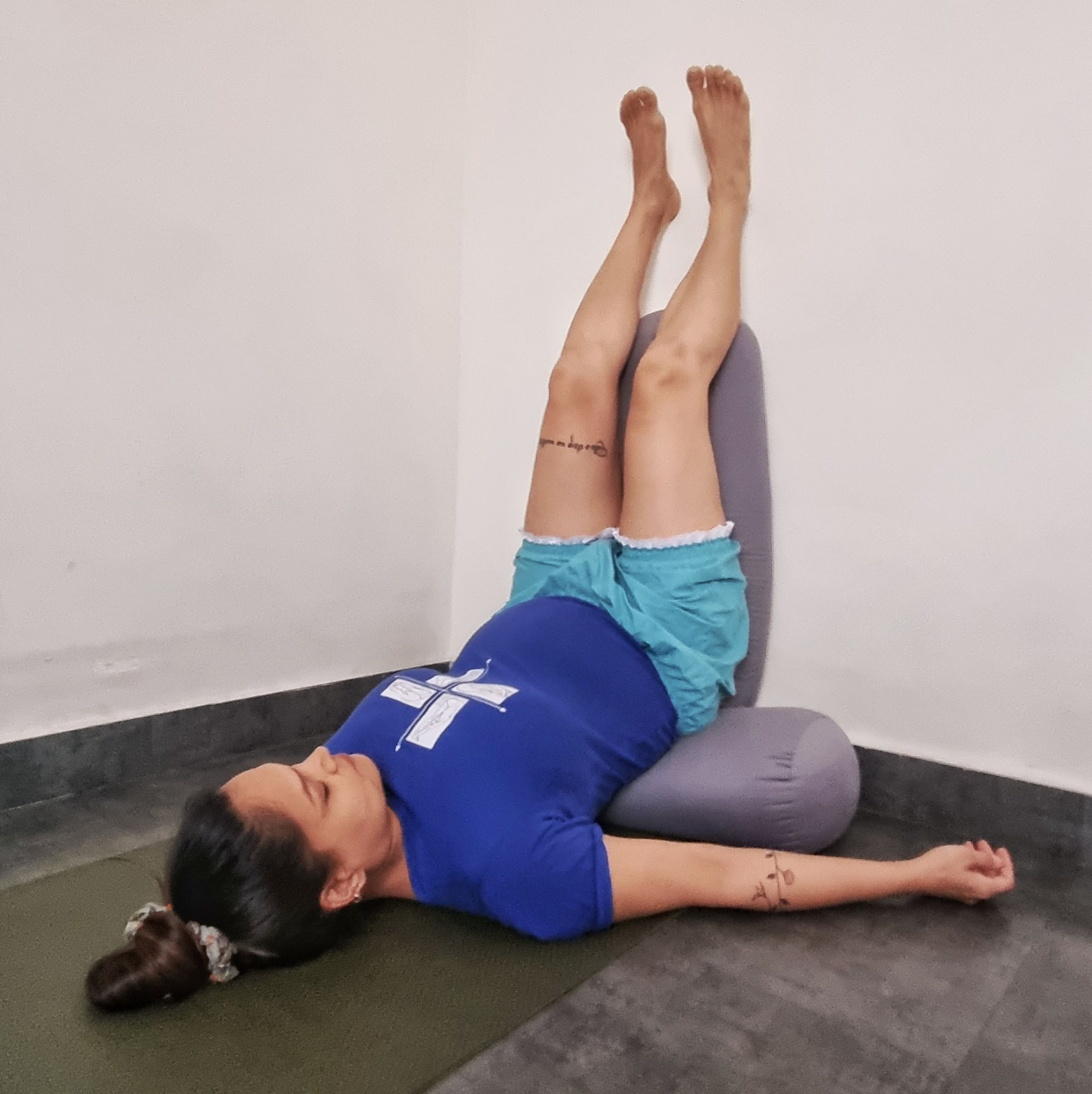
Widen your legs.
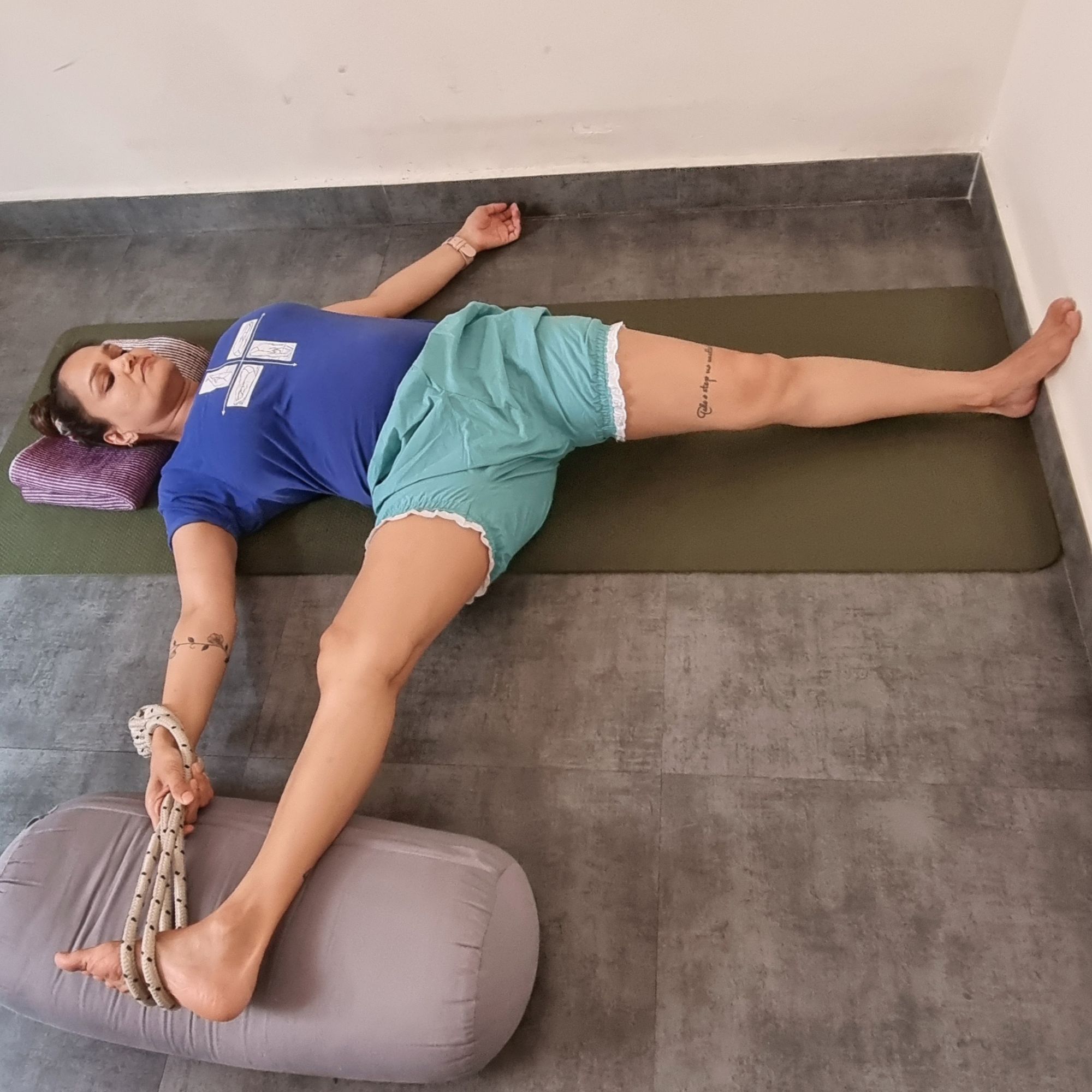
Supta padangushtasana B is wonderful to stabilise the pelvis. Do it on both sides for about 2 minutes each, and don’t forget the bolster under the extended leg. The height of the leg isn’t important – in fact, you might feel better if you reduce the angle between the legs.
Remedies/Precautions
- Early on I realised that demonstrating asanas in yoga class aggravated the pain because we often only demonstrate on one side. Since then I’ve been very cautious about the kinds of asanas I demonstrate and often opt not to demonstrate at all, relying on oral instructions.
- I’ve moved two bolsters to my bedroom and now sleep with them between my knees. (Also, it’s recommended to sleep on the left side, and I usually do this.)
- Although many women continue to lift heavy weights in the gym, or even lift and carry their toddlers or groceries – this puts uneven strain on your back. Even for women who are used to heavy lifting – the added hormones and growing belly makes your back vulnerable. For this reason I eliminated the tree pose and natrajasana from my practice.
- I also found that crossing my legs when sitting at my desk causes the pain, probably because of the uneven weight distribution. So I consciously changed the way I sit.
- As much as possible sit in baddhakonasana, sukhasana or upavishta konasana with your back supported.
- During the prenatal yoga classes I attended, my teacher would remind me to not rush and move slowly, more consciously. This really helps as it reduces the chances of something getting inadvertently tweaked.
- Icing reduces inflammation.
- Water based activities – like aqua yoga, aqua zumba, swimming or even just walking back and forth in the pool help a lot because it strengthens your muscles while supporting about 70% of your body weight.
- Rest it out.
Because there is no one reason for why this pain occurs, prevention is better than cure. But, because pregnancy is also a game of hormones, it’s not always possible to prevent pelvic girdle pain, and you might need to just manage the symptoms.
Hope this helps!
1 Comment
[…] your gums like that. Painless yet frightening. I recalled reading a little about this in ‘What to Expect When You’re Expecting‘, but couldn’t remember what it said I should do. I sent a frantic message to my […]